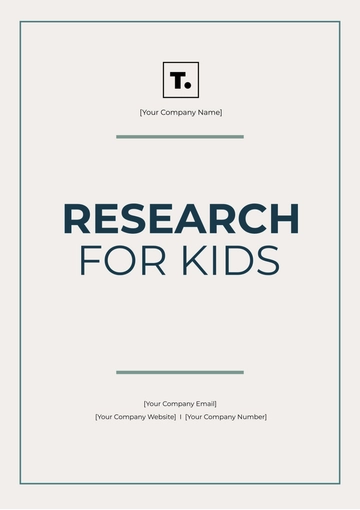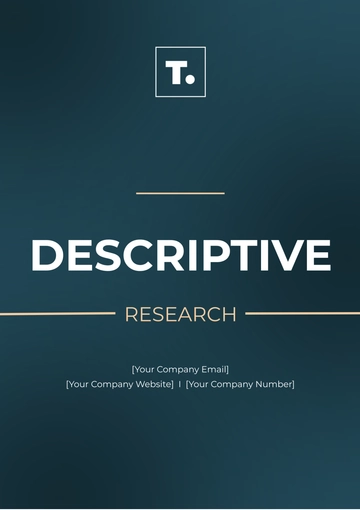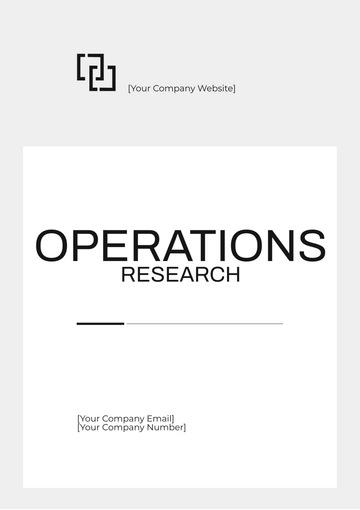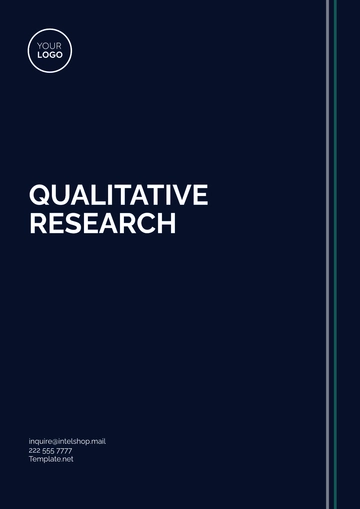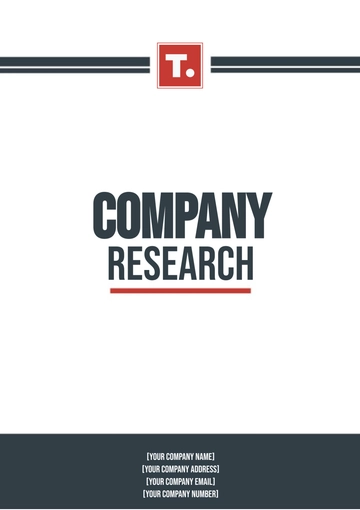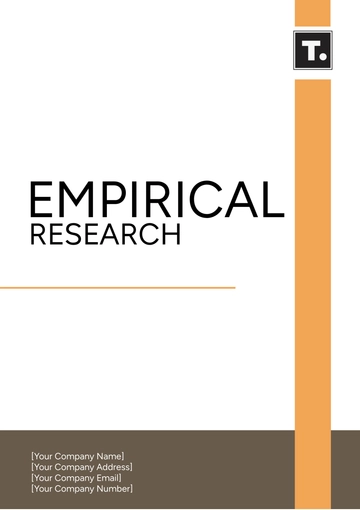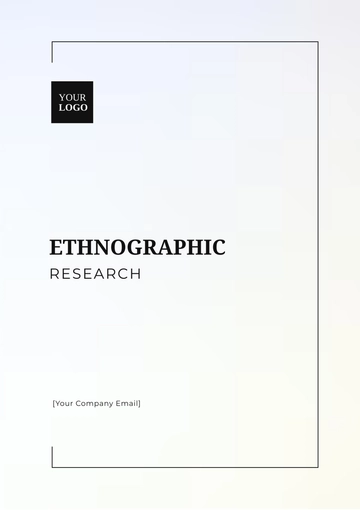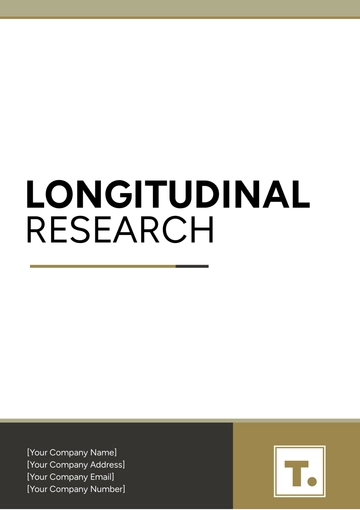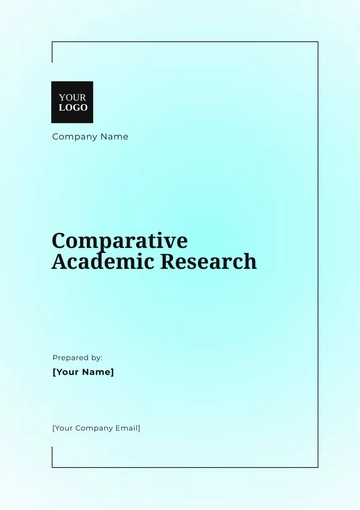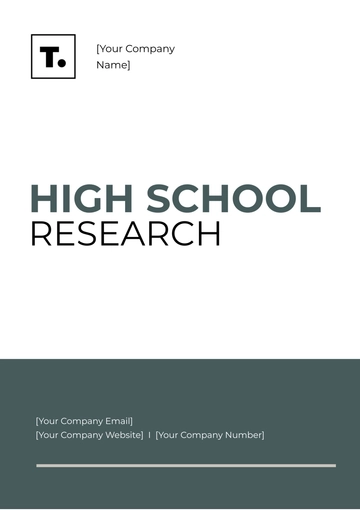Free Recruitment Channel Research HR
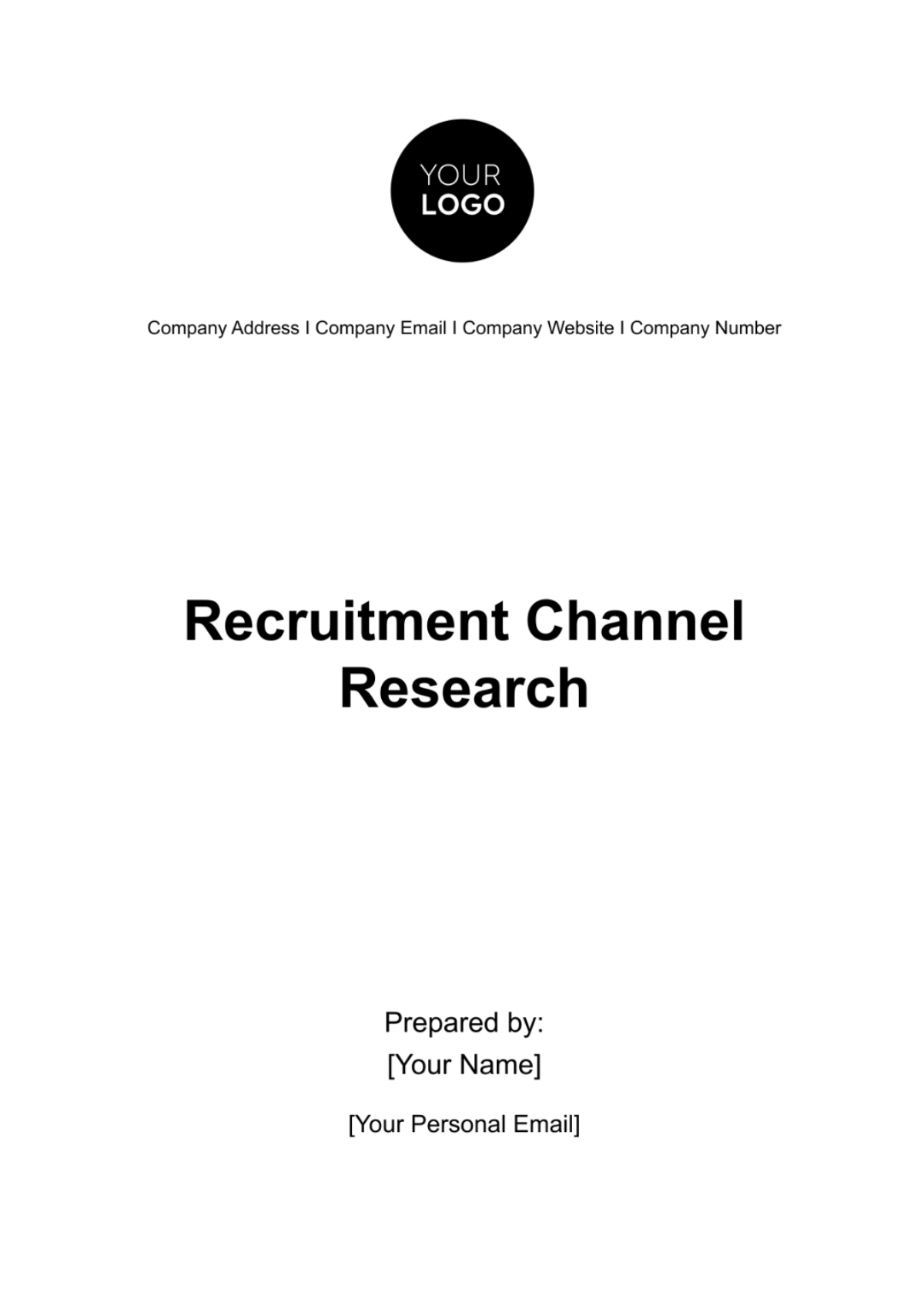
Table of Contents
1. Executive Summary............................................................................ 2
2. Objective.............................................................................................. 3
3. Research Methodology........................................................................ 3
4. Overview of Recruitment Channels................................................... 4
4.1 Online Channels............................................................................ 5
4.2 Offline Channels........................................................................... 6
5. Cost...................................................................................................... 7
5.2 Efficiency...................................................................................... 7
5.3 Effectiveness................................................................................. 7
6. Recommendations................................................................................ 8
7. Appendices........................................................................................... 8
7.1 Survey Forms................................................................................. 9
7.2 Interview Transcripts.................................................................. 10
8. Conclusion.................................................................................11
1. Executive Summary
The recruitment process serves as the critical infrastructure upon which organizations build their future. At Human Resources, the emphasis on hiring quality talent is not merely a corporate mandate; it's a strategic necessity. In an era marked by rapid technological advances, increased competition, and evolving customer needs, our workforce must not only be skilled but also adaptable, innovative, and aligned with our core values.
Given the pivotal role that recruitment plays in shaping the future of our organization, a comprehensive investigation into the various channels of recruitment is not just timely but imperative. This report, therefore, seeks to offer a multi-dimensional analysis of the recruitment landscape specific to Human Resources. By scrutinizing several recruitment channels—both online and offline—this research aims to evaluate each avenue's cost, efficiency, and effectiveness. These three metrics were chosen for their direct impact on the quality of candidates attracted and the overall ROI of the recruitment process.
Cost analysis in the report involves a granular breakdown of financial expenses incurred in each channel, from job posting fees to event participation costs. Efficiency is gauged by the speed and ease with which each channel can fill job vacancies. Effectiveness, perhaps the most crucial metric, measures the quality of candidates sourced through each channel. High-quality candidates are not merely those with the requisite skills but those who fit well within our organizational culture and show high potential for future leadership roles.
The findings of this research culminate in a series of tailored recommendations, aimed at optimizing our recruitment process. These recommendations are geared towards maximizing ROI and ensuring that Human Resources continues to attract the kind of talent that will drive our organization forward.
Through rigorous analysis and thoughtful recommendations, this report serves as a roadmap for refining Human Resources' recruitment strategies. Its objective is to ensure that the organization's lifeblood—its human capital—is sourced through the most effective and efficient means possible, thereby setting a foundation for sustained organizational excellence.
2. Objective
The principal objective of this comprehensive research is multi-faceted, aiming to provide a holistic approach to recruitment for Human Resources. The core aim is to discern the most effective and efficient recruitment channels available, leading to more refined, streamlined, and cost-effective hiring procedures. In a competitive marketplace, where the battle for top talent can determine an organization's future, merely posting job vacancies on traditional platforms is insufficient. Thus, this study intends to delve into multiple channels—ranging from digital platforms like job boards and social media to offline channels like career fairs and internal referrals—to measure their performance on several key metrics.
Effectiveness, in this context, relates not just to the number of applicants each channel brings in, but also the quality of those candidates in terms of skills, experience, and organizational fit. We believe that a successful recruitment channel is one that can attract candidates who not only meet the qualifications for the job but also align well with the company's culture and long-term objectives.
Efficiency, on the other hand, pertains to the time and resources required to secure a hire through each channel. An efficient recruitment process is one that minimizes the time-to-hire and the cost-per-hire while maximizing the quality of the recruitment pool.
Additionally, the research aims to evaluate the financial aspects of each channel, breaking down the costs involved to provide a clear picture of ROI. This cost-effectiveness analysis is crucial for budget allocation in future recruitment cycles, ensuring that company resources are utilized most judiciously.
By meeting these objectives, the research seeks to provide Human Resources with data-driven insights that can inform future recruitment strategies. This will enable the company to make well-informed decisions, optimizing not just for immediate hiring needs but for long-term organizational success.
3. Research Methodology
The research methodology deployed in this study is a mixed-methods approach, incorporating both quantitative and qualitative data to provide a comprehensive evaluation of recruitment channels for Human Resources. By combining different types of data, the study aims to present a fuller, more nuanced picture of what works, what doesn’t, and why, in the realm of talent acquisition.
Quantitative Data
The quantitative portion of the study focuses on empirical data, collected primarily through job posting statistics. Metrics such as the number of applications received, time-to-hire, and cost-per-hire were closely examined for each recruitment channel. We used data analytics tools to mine this information, which was then statistically analyzed to identify trends and patterns. Further metrics, including applicant-to-interview ratios and interview-to-offer ratios, were also considered to evaluate the efficiency and effectiveness of each channel. This data serves as the backbone for our cost-benefit analysis, allowing us to quantitatively assess the ROI of each recruitment avenue.
Qualitative Data
Complementing the quantitative data, the qualitative aspect of our research involved in-depth interviews with key stakeholders in the hiring process: recruiters, hiring managers, and candidates. These interviews were designed to extract nuanced insights into the subjective experiences of all parties involved. Questions covered topics like the ease of application, communication efficiency, and overall satisfaction with the recruitment process. The candidates’ perspectives were particularly enlightening, revealing what attracted them to specific channels and what kept them engaged throughout the hiring process.
Both sets of data were then synthesized to offer a well-rounded view. The quantitative data provides a macro-level understanding of channel performance, while the qualitative insights add a layer of depth, offering micro-level details that numbers alone could not capture.
Through this robust research methodology, the study aims to provide actionable insights that can significantly inform Human Resources' strategic decisions in recruitment channel selection, optimization, and future investment. This mixed-methods approach ensures a balanced, thorough analysis, which is critical for achieving the objectives laid out in this research.
4. Overview of Recruitment Channels
The recruitment landscape offers a multitude of channels through which Human Resources can attract potential candidates. These channels can broadly be categorized into online and offline avenues, each having its unique set of advantages, disadvantages, and impact. Given the objective of identifying the most effective and efficient recruitment methods, we have scrutinized various online and offline channels on key parameters such as cost, expected reach, and efficiency. The following subsections provide a more detailed breakdown of these channels, capturing essential information that will be pivotal for making data-driven recruitment decisions.
4.1 Online Channels
Online recruitment has emerged as a dominant force in the modern hiring landscape, providing convenience, speed, and a wide reach. Below is a table summarizing the key online channels evaluated for this research:
Channel | Contact | Cost | Expected Reach | Efficiency |
Company Website | webmaster@hrd.com | $100 per month | 2000-3000 views | High |
Sandra Gilbert | $200 per posting | 1500-2000 views | Moderate | |
Indeed | Mark Hampton | $150 per posting | 1000-1500 views | Low |
Company Website: Managed internally, posting job openings on the company website not only minimizes costs but also ensures high visibility among candidates specifically interested in the company.
LinkedIn: Although costlier, LinkedIn taps into a more professional audience, including passive candidates. However, it offers moderate efficiency compared to other platforms.
Indeed: A popular job portal but offers lower efficiency, perhaps due to the broadness of its user base and the volume of job postings.
4.2 Offline Channels
Despite the growing trend of digitalization, offline recruitment channels still serve as effective means for sourcing candidates. Here are the main offline channels we assessed:
Channel | Contact | Cost | Expected Reach | Efficiency |
Job Fairs | Lisa Young | $500 per event | 300-400 candidates | High |
Newspaper Ads | Alan Gomez | $300 per ad | 1000-1500 readers | Low |
Networking | Grace Dawson | Variable | 50-100 professionals | High |
Job Fairs: These events may require significant investment but often yield high-quality candidates who are immediately available for interviews, making the overall efficiency high.
Newspaper Ads: Despite their broad reach, newspaper ads usually attract a less targeted audience, leading to lower efficiency in terms of candidate quality.
Networking: Personal connections and industry networks serve as an invaluable resource for sourcing candidates. The costs are variable but the chances of finding a high-quality candidate are usually high.
Through a balanced mix of online and offline recruitment channels, Human Resources aims to optimize the effectiveness and efficiency of its hiring processes. This section serves as a foundational overview to inform subsequent analyses and recommendations.
5. Comparative Analysis
The decision to select the most suitable recruitment channels should not be made in isolation but through a comparative analysis. In this section, we evaluate the channels based on three critical parameters: cost, efficiency, and effectiveness. This multi-dimensional evaluation will enable us to better understand how different channels perform relative to each other, thereby guiding strategic decisions for optimizing our recruitment process.
5.1 Cost
When analyzing the cost factor, it becomes evident that some channels, such as Job Fairs and LinkedIn, are more expensive than others. However, it's essential to consider these costs in conjunction with their efficiency and effectiveness. While Job Fairs may require an initial investment of $500 per event, the high quality and immediate availability of candidates make it a cost-effective approach in the long run. Similarly, LinkedIn's $200 per posting fee can be justified by its reach into a professional and sometimes passive talent pool, which other channels may not effectively tap into.
5.2 Efficiency
Efficiency is measured by how quickly and easily a channel can reach potential candidates and lead them through the recruitment funnel. In this regard, our internal Company Website and Networking events have proven to be the most efficient channels. The company website attracts candidates who already have an interest in our organization, thereby increasing the likelihood of a fit. Additionally, the website incurs a relatively low monthly maintenance cost. Networking events, although variable in cost, often produce high-quality leads due to the direct nature of personal referrals and industry-specific gatherings.
5.3 Effectiveness
Effectiveness focuses on the quality of candidates that a channel can attract. After evaluating the channels, it is clear that LinkedIn stands out in terms of candidate quality. Even though it's a more expensive platform, the kind of professionals it attracts is often more aligned with the skills and experience levels we require. The candidates are not only active job seekers but also professionals who might not be actively looking, offering a wider array of choices and richer talent pools to select from.
In summary, this comparative analysis underscores the importance of a balanced approach. While some channels may excel in one parameter, they may fall short in others. Therefore, a blend of multiple recruitment channels, chosen based on their strengths in cost, efficiency, and effectiveness, will likely yield the best results for Human Resources.
6. Recommendations
Based on the thorough comparative analysis conducted, the following recommendations are made to optimize the recruitment process and attract high-quality candidates more efficiently and effectively.
Increase Budget Allocation for Company Website and LinkedIn
Our Company Website and LinkedIn have shown remarkable results in terms of efficiency and effectiveness, respectively. The Company Website, with its high visibility and targeted reach, deserves an increased budget allocation for better optimization and feature enhancements. Investing more in the website could involve SEO activities, adding interactive elements like chatbots for instant candidate queries, and creating specialized landing pages for specific job roles, thereby making the website more dynamic and candidate-friendly.
Similarly, LinkedIn has proven to be a vital tool for attracting specialized and experienced professionals. An increased budget allocation for LinkedIn could allow for more frequent job postings, targeted ads, and perhaps even premium memberships for key recruiters, enabling access to a broader range of high-quality candidates.
Limit or Discontinue Newspaper Ads
The analysis has shown that newspaper ads rank low in terms of both efficiency and effectiveness. They not only reach a less targeted audience but also offer low ROI compared to other channels like Job Fairs or the Company Website. Additionally, the shifting trend towards digital mediums suggests that newspaper ads may continue to decline in effectiveness. Given these factors, it's advisable to either limit or completely discontinue the use of newspaper ads for recruitment purposes.
By implementing these recommendations, Human Resources can better allocate its budget and resources, thereby achieving a more streamlined, efficient, and effective recruitment process. As we continue to adapt to changes in the employment landscape, such optimization of recruitment channels becomes increasingly essential for maintaining a competitive edge in talent acquisition.
7. Appendices
7.1 Survey Forms
Recruitment Channel Effectiveness Survey
Company: Human Resources
Date: July 15, 2050
Prepared By: Grace Dawson
Contact: grace@hr.com, 222 555 7777
Instructions: Please fill out the following survey to help us better understand the effectiveness of various recruitment channels. Your feedback is invaluable.
Name (Optional): ___________________________
Position: ___________________________
How did you learn about the job opening at Human Resources?
Company Website
LinkedIn
Indeed
Job Fair
Newspaper Ad
Networking
Other: ________________
On a scale of 1-5, how would you rate the user-friendliness of the application process for the channel you used?
1 (Very Difficult)
2 (Difficult)
3 (Neutral)
4 (Easy)
5 (Very Easy)
Did you encounter any issues while applying? If yes, please specify.
On a scale of 1-5, how well do you think the recruitment channel represented the company?
1 (Very Poorly)
2 (Poorly)
3 (Neutral)
4 (Well)
5 (Very Well)
Any additional comments or suggestions?
7.2 Interview Transcripts
Interview with Sandra Gilbert, LinkedIn Contact for Human Resources
Date: August 1, 2050
Interviewer: Grace Dawson
Contact: grace@hr.com, 222 555 7777
Grace Dawson: Thank you for taking the time to speak with me today, Sandra. Can you
start by describing the typical reach we can expect from a job posting on LinkedIn?
Sandra Gilbert: Absolutely, Grace. On average, you can expect around 1500-2000 views per posting. However, the numbers can vary based on the job title and qualifications required.
Grace Dawson: That's great to hear. How would you rate the efficiency of LinkedIn as a recruitment channel?
Sandra Gilbert: I'd say the efficiency is moderate. While LinkedIn is excellent for reaching a vast, specialized audience, it can sometimes take longer to filter through candidates to find the right match.
Grace Dawson: Understandable. And what are the costs associated with posting a job ad?
Sandra Gilbert: The cost per posting is $200, but we offer various packages that can bring down the average cost and provide additional features like sponsored ads and analytics.
Grace Dawson: Excellent, that's good to know. Finally, do you have any recommendations for improving our use of LinkedIn for recruitment?
Sandra Gilbert: I'd recommend taking advantage of our analytics tools to better understand the demographics of the candidates you're attracting. It can provide valuable insights for future postings.
Grace Dawson: That's a great suggestion. Thank you for your insights, Sandra.
Sandra Gilbert: You're welcome, Grace. Always here to help.
8. Conclusion
The Company Website and LinkedIn have emerged as the most effective and efficient recruitment channels. It is recommended that these channels be prioritized in the recruitment process.
For any queries, please contact [Your Name] at [Your Email] or [Your Company Number].
This report is subject to revisions and should be checked periodically for updates.
- 100% Customizable, free editor
- Access 1 Million+ Templates, photo’s & graphics
- Download or share as a template
- Click and replace photos, graphics, text, backgrounds
- Resize, crop, AI write & more
- Access advanced editor
Explore the Recruitment Channel Research HR Template on Template.net, an editable and customizable resource designed to streamline your hiring process. Crafted for efficiency, this template is editable in our Ai Editor Tool, allowing you to tailor it to your unique needs, ensuring precision and ease in HR research endeavors.



